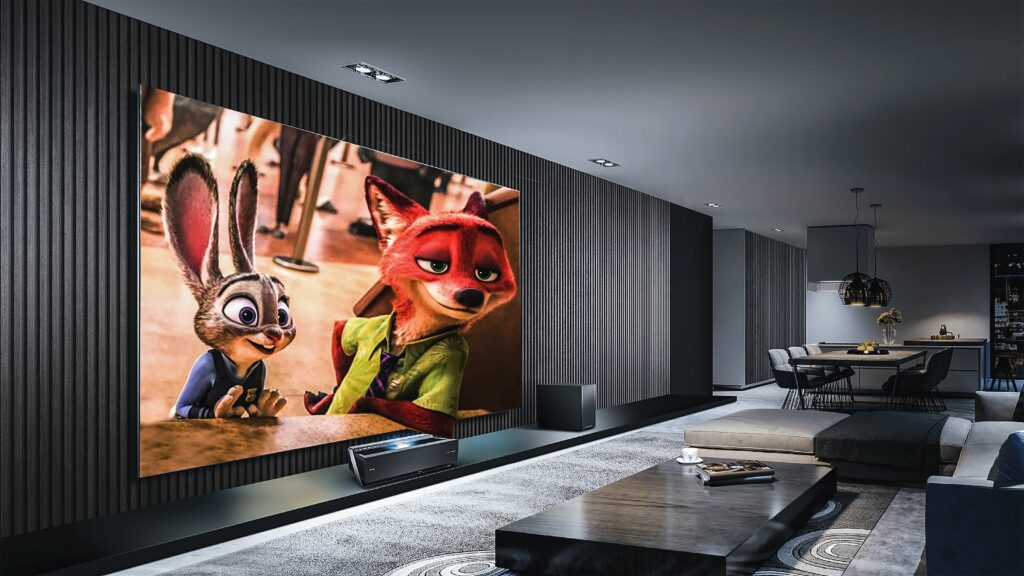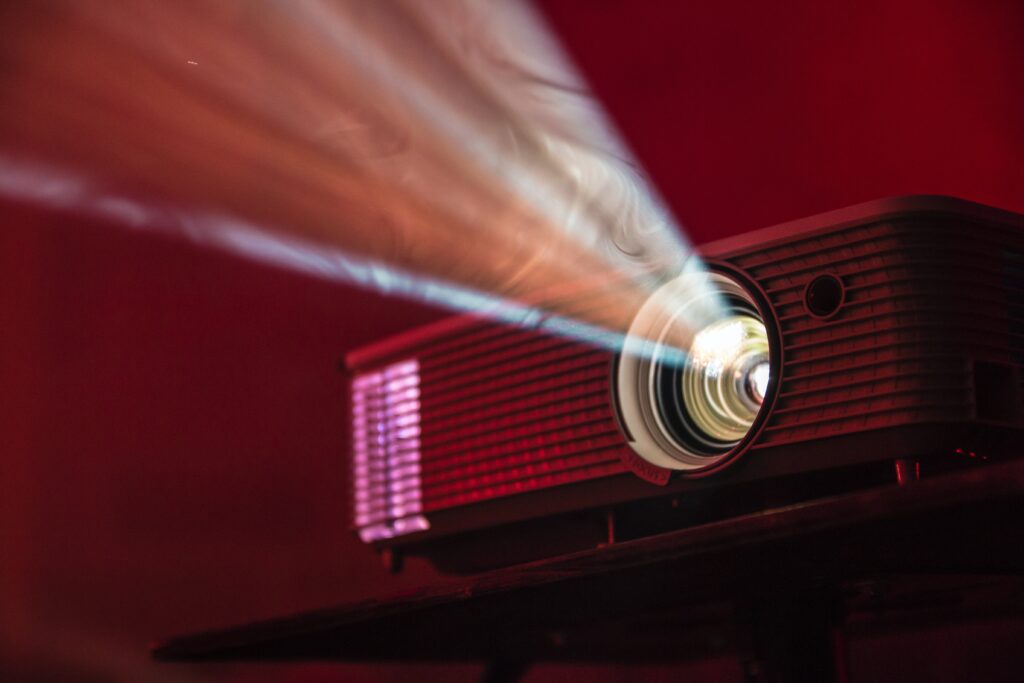What is a Laser TV, and how do they compare to traditional projector and flat-screen TVs?
A Laser TV, also known as a Ultra Short Throw (UST) Projector, is a new television technology heralded for it’s convenience and quality. While traditional projectors are generally positioned in the back of a viewing room – often mounted to a ceiling – Laser TVs are compact devices that are placed very closely to the viewing screen. The “throw” – in the term “ultra short throw” projectors – refers to the distance of the projector to the screen.

How Does a Laser TV Work?
Modern Laser TVs are a form of television technology that uses multiple individually modulated optical rays (lasers) to display an image to a viewing surface. Laser TVs are a culmination of recent developments in semiconductors and various Digital Light Processing (DLP) chipsets used to produce a more efficient and higher quality viewing experience. Traditional projectors, by contrast, rely on less efficient UHP lamp technology. Laser TVs generally have a much longer lifespan compared to lamp-based projectors and are more energy efficient than both traditional projectors and flat-screen TVs.
Laser TVs have some major advantages over traditional projectors:
- They’re generally very compact and mobile, whereas traditional projectors are generally mounted to a ceiling or other surface.
- Because the distance between the Laser TV and screen is so short, there’s no concern of blocking the projection or tripping over wires.
- They’re also great for presentation as presenters don’t have to concern themselves with blocking a view or or getting headlight blindness
- They present a brighter image with less lumens, which often translate to a higher quality viewing experience. Because of this, you don’t need nearly as dark of an environment to have a high-quality viewing experience of a laser TV vs a traditional projector.
- They power on instantly
- They operate much more quietly
- They require much fewer wires
- They have much longer lifespans

The Dream of the 100+ Inch TV
Laser TVs have their advantages over traditional flat-screen TVs as well. Most flat-screen TVs max out for practical purposes around eighty inches. Beyond 80 inches you’re paying a serious price in terms of cost, size, and weight. For example, a real quality 150″ flat-screen UHD TV can cost upwards of $100,000+ (here’s a 146″ UHD TV for the low price of $572,000) and weigh many hundreds of pounds. A Laser TV, by contrast, can almost scale infinitely for all practical purposes, assuming you have the wall space. Laser TVs are also very compact devices so they can easily be transported and carried with you while you travel. I don’t know of many people taking their flat-screen TVs with them while traveling.
Laser TVs are More Energy Efficient and Environmentally Friendly
The last point that should be noted of laser TVs are their energy efficiency compared to traditional television and projector technologies. A Laser TV consumes a little over one-third (~37%) of the power of a traditional LCD flat-screen television of the same screen size. And the efficiency of the semiconductors powering laser TVs is continually improving! Laser TVs are also much more energy efficient than traditional lamp projectors for various reasons. The most notable being that lamp projectors use white light technology that disposes of all unusable colors except red, green, and blue. Whereas laser TVs use less power and energy by only displaying the exact colors needed for an image. The efficiency of Laser TVs also means that the viewer gets a much brighter, richer image with higher contrast and more life-like colors.
For the reasons mentioned above, many are finding Laser TVs to be superior in both form factor and viewing quality to both traditional projectors and flat-screen TVs
